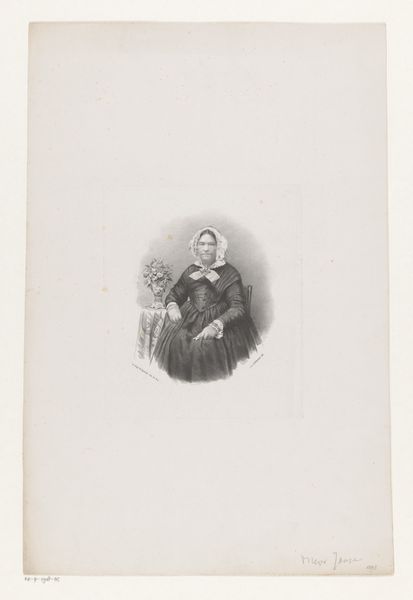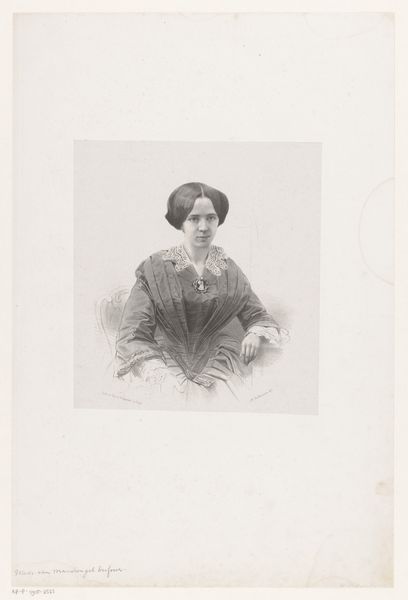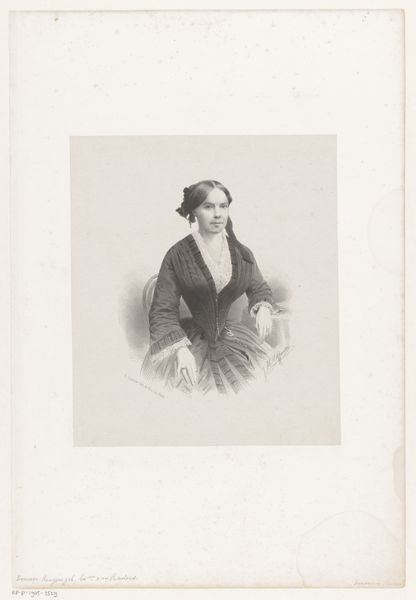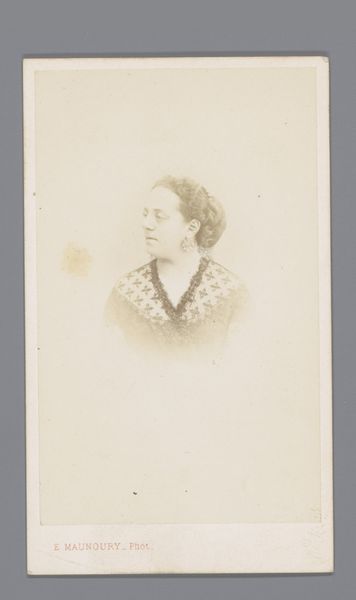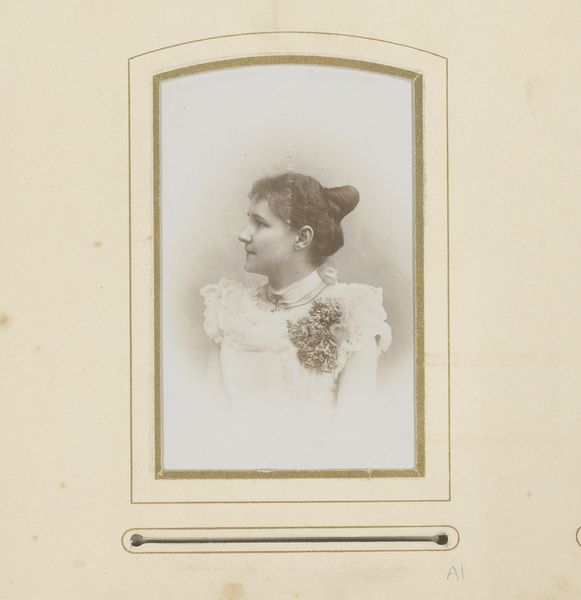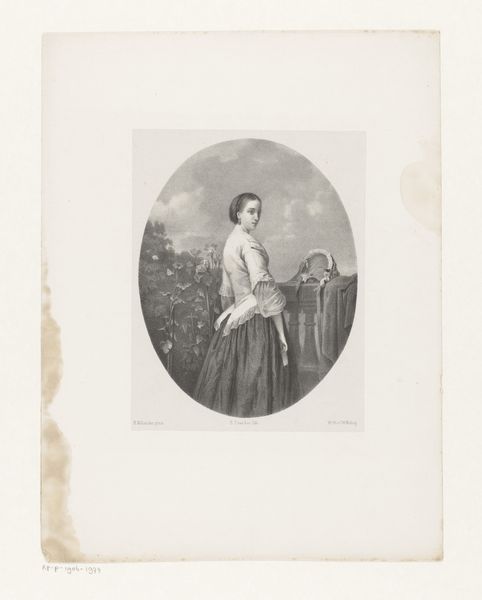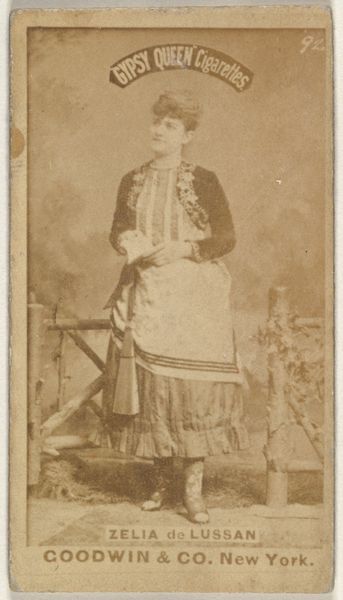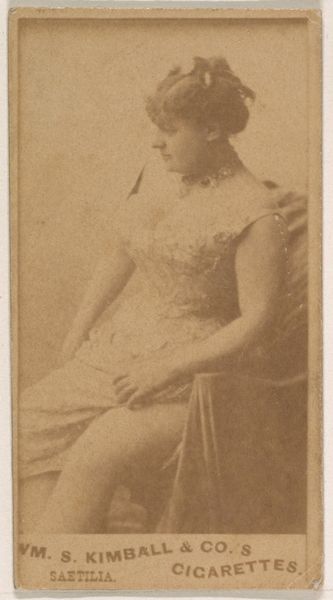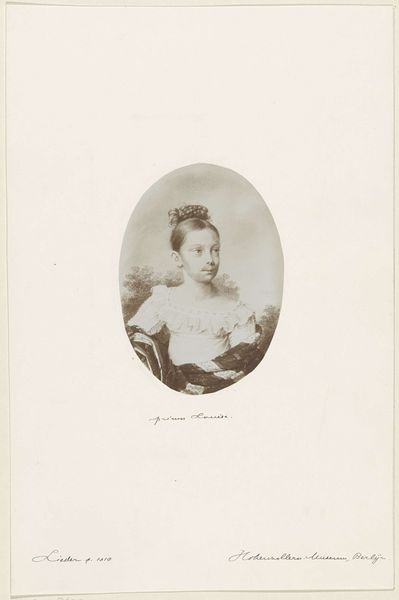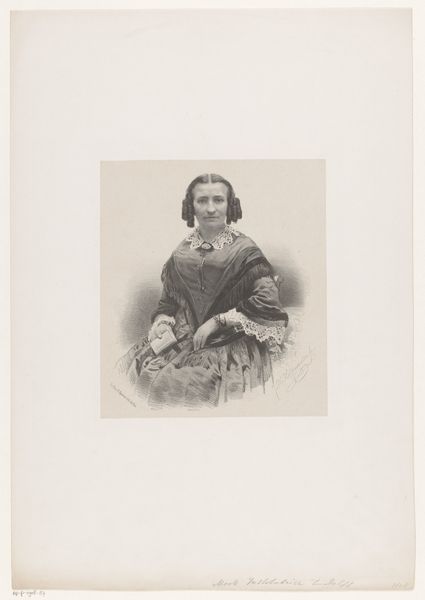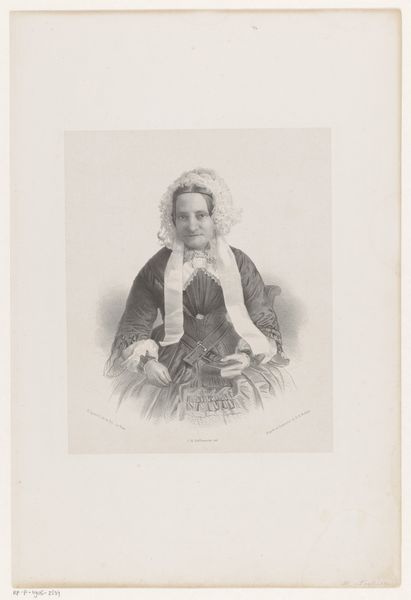
drawing, pencil
#
portrait
#
drawing
#
figuration
#
pencil
#
genre-painting
#
academic-art
Dimensions: height 455 mm, width 310 mm
Copyright: Rijks Museum: Open Domain
Curator: Here we have "Portret van mevrouw De Lange" a pencil drawing executed sometime between 1851 and 1883 by Johan Hendrik Hoffmeister. It strikes me as rather… subdued. Editor: Subdued is an interesting choice. The cross-hatching in the pencil work, to me, evokes a somber restraint, like she's bound by the rigid expectations of her time. Curator: I see what you mean. Her dress, that somewhat severe plaid pattern, coupled with the tight bun, projects a certain austerity. It makes me think of the limited roles afforded to women of the mid-19th century. Editor: The plaid itself carries connotations. Traditionally associated with Scottish clans, its adoption here feels almost like a forced conformity, trading individuality for belonging. The tight control of the lines mirrors a societal constraint. Curator: And yet, there's a softness too. The delicate lace at her collar, the gentle curve of her hand. Are these quiet acts of rebellion, subtle challenges to those rigid expectations? Editor: Potentially. Consider the window barely suggested in the background. Light, illumination – could that symbolize access to knowledge or spiritual understanding denied to her in other areas of life? Windows often signal such portals. Curator: I hadn’t considered that, but the window does bring a certain ambiguity to the piece. What seems like mere background suddenly shifts to a powerful metaphor. I'm curious about her hands, so deliberately posed. Is she clutching something we can't see? Is that tension rooted in anxieties about domesticity and marriage? Editor: Absolutely, the hands. Clasped, contained... think of them as gatekeepers to emotions deemed inappropriate for women of the time. This becomes a symbolic barrier – repressing natural expression in favor of stoic virtue. Curator: So the artwork acts not just as a portrait, but as a cultural mirror reflecting anxieties about female identity and agency during the period? Editor: Precisely. It embodies, on closer inspection, the psychological struggle to assert oneself within stifling societal confines. The symbolism reveals cultural values often left unspoken. Curator: Examining the layers within what seemed initially like a straightforward portrait proves that we can learn much from these historical dialogues, can’t we? Editor: It's in decoding the hidden symbols, engaging with both the historical context and artistic expression that real dialogue, and understanding, blossoms.
Comments
No comments
Be the first to comment and join the conversation on the ultimate creative platform.
